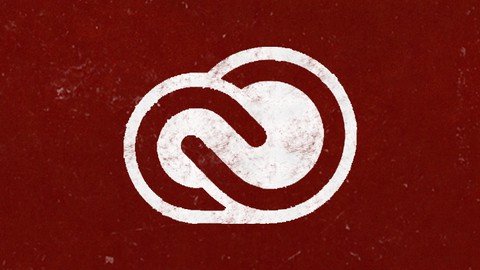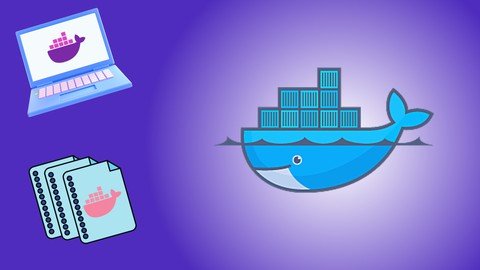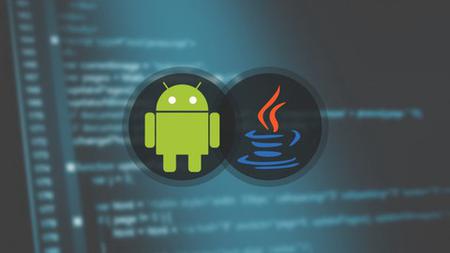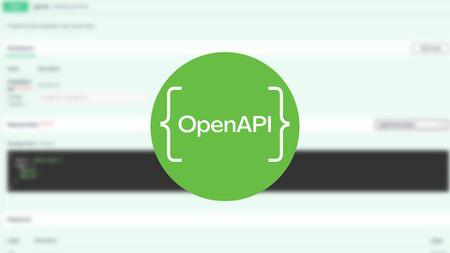Published 06/2022
Genre: eLearning | MP4 | Video: h264, 1280×720 | Audio: AAC, 44.1 KHz
Language: English | Size: 6.27 GB | Duration: 80 lectures • 16h 0m
What you’ll learn
- CCNA stands for Cisco Certified Network Associate, which is a certification you can earn after taking the 120-minute exam administered by Cisco.
- ccna, networking, ccna 200-301, network, cisco ccna, cisco, ccna security, networks, computer networking, networking fundamentals.
- cyber security, network security, cybersecurity, ccnp.
- Take our top-rated Cisco Certified Network Associate (CCNA) training course from networking fundamentals to exam prep lab courses on Oak Academy Udemy Profile.
- The Cisco Certified Network Associate (CCNA) is an entry-level IT certification issued by Cisco.
- The exam tests your knowledge and skills related to network fundamentals, network access, IP connectivity, IP services, security fundamentals, and automation.
- Many people pass the CCNA exam through self-study using the latest learning materials supplemented with practical instruction.
- Cisco has associate (CCNA), professional (CCNP), and expert (CCIE) certifications. These include the CCNA, Cisco Certified CyberOps Associate.
- For achieving CCNA certification, one must earn a passing score which is nearly 82.5% on the Cisco certification exam 200-301.
- Routers, Hubs and Switches in cisco CCNA 200 -301
- Security Features in ccna security
- No Wire – Wireless in cisco CCNA 200 -301
- Servers in ccna security
- Make It Virtual in cisco ccna
- The Great OSI Model in cisco CCNA 200 -301
- What is TCP/IP?
- UDP vs TCP in cisco ccna
- Well-known Network Architectures
- Standard (Copper) Cables
- Fiber Optic Cables in ccna 200-301
- What is IPv4 (ipv4) Address?
- Classes and Assignment of IPv4 (ipv4) Address
- DNS Services in ccna 200-301
- Unicast, Multicast and Broadcast
- Binary Format Numbering in cisco ccna 200-301
- Subnetting
- Subnetting – Subnet Mask in cisco ccna 200-301
- Practice for Subnetting
- Why and What is IPv6 (ipv6) Address?
- IPv6 (ipv6) Address Format
- IPv6 (ipv6) Address Types
- What is Routing and Its Process?
- Metric and Administrative Distance in Routing Tables
- Let’s Compare Routing Protocols in cisco ccna 200-301
- What is OSPF?
- OSPF Adjacency & Neighbor Forming Process
- OSPF Cost in cisco ccna
- OSPF Areas and LSAs
- OSPF Configuration in cisco ccna
- First-Hop Redundancy Protocols
- Types of Switches
- Layer 2 Switch vs Layer 3 Switch
- What is CDP
- What is LLDP
- VLAN and Its Types
- VLAN Configuration
- Trunks
- Spanning Tree Protocol – STP
- STP Attacks, Root Guard and BPDU Guard
- EtherChannel
- What is Wireless LAN
- Wi-Fi Channels and Wi-Fi Standards
- Wireless Transmission
- Wireless Security Protocols
- WLC Configuration
- What is DHCP Theory in Cisco CCNA
- How to Configure the Cisco IOS DHCP Server Part 1
- How to Configure the Cisco IOS DHCP Server Part 2
- What is NAT Theory in CCNA
- How to Configure the NAT
- What is NTP Theory in ccna
- How to Configure the NTP
- What is QoS
- Traffic Topologies
- What are SNMP and Syslog
- What are FTP and TFTP
Requirements
- Some basic ccna networking knowledge
- Desire to know abaut CCNA, CCNA 200-301 exam, networking, network, network protocol, cisco cnna, ccna certification, internet protocol.
- Watch the networking and ccna 200-301 course videos completely, to the end and in order.
- Internet Connection
- Any device such as mobile phone, computer or tablet where you can watch the cisco ccna lesson.
- Learning the ccna determination and patience.

Description
ccna, networking, ccna 200-301, cisco, cisco ccna, network, cisco ccna 200-301, ccna security, internet protocol, network protocols, ethernet, wireless, switching
Hello,
Welcome to " Cisco CCNA 200-301 Complete A-Z Cisco CCNA Networking Course" course
CCNA 200-301 Course includes networking, ccna security, network services, internet protocol to pass CCNA 200-301 exam
CCNA stands for Cisco Certified Network Associate, which is a certification you can earn after taking the 120-minute exam administered by Cisco. The exam tests your knowledge and skills related to network fundamentals, network access, IP connectivity, IP services, security fundamentals, and automation and programmability. Once you earn your CCNA, you can use it to get a job in the information technology (IT) or networking fields. For example, you could work as a Cloud Engineer, Network Administrator, Systems Administrator, or IT Manager. You can also take additional specialized exams to land a more specialized role. If you complete the CCNA Routing and Switching Certification, for example, you are eligible for positions like a Network Analyst or Network Engineer.
The Cisco Certified Network Associate (CCNA) is an entry-level IT certification issued by Cisco. If you’re looking for a networking role in IT, such as a network specialist, administrator, or engineer, getting a CCNA certification by passing the 200-301 exam can be a great way to prepare. While there are no prerequisites for the exam, training is recommended. Explore our top-rated courses and skill up for this in-demand certification.
The CCNA is a tough test, but it isn’t impossible. With expert instruction from top-rated instructors, you can ace every section of the CCNA. Whether you need help understanding network services, “Cisco CCNA 200-301 Complete A-Z Cisco CCNA Networking Course” has a beginner-friendly course to help you.
The CCNA exam tests your knowledge and skills in networking fundamentals such as routing and switching, network access, IP connectivity, IP services, security basics, and automation and programmability. Among the topics covered are how to build simple LANs, troubleshooting routers and switches, IP addressing and subnetting, IPv4 and IPv6 routing, address allocation using Dynamic Host Configuration Protocol (DHCP), access control lists (ACLs), basic WAN technologies such as VPN, external authentication methods, quality of service (QoS), IP services such as Network Address Translation (NAT).
Take a top-rated Cisco Certified Network Associate (CCNA) training course on Oak Academy Udemy profile. From networking fundamentals to exam prep lab courses, we’ve got options to help get you ready for the CCNA exam. Train up now and gain valuable skills in the IT field.
During the course you will learn the following topics:
- CCNA
- Networking
- CCNA 200-301
- Routers, Hubs and Switches in cisco CCNA 200 -301
- Security Features in ccna security
- No Wire – Wireless in cisco ccna
- Servers in ccna 200-301
- Make It Virtual in cisco ccna 200-301
- The Great OSI Model in cisco ccna
- What is TCP/IP?
- UDP vs TCP in ccna
- Well-known Network Architectures
- Standard (Copper) Cables in networking
- Fiber Optic Cables
- What is IPv4 (ipv4) Address?
- Classes and Assignment of IPv4 Address in ccna 200-301
- DNS Services in cisco ccna
- Unicast, Multicast and Broadcast in network
- Binary Format Numbering in cisco
- Subnetting in ccna security
- Subnetting – Subnet Mask in network
- Practice for Subnetting in networking fundamentals
- Why and What is IPv6 Address?
- IPv6 (ipv6) Address Format and IPv6 Address Types in ccna
- What is Routing and Its Process?
- Metric and Administrative Distance in Routing Tables in ccna
- Let’s Compare Routing Protocols
- What is OSPF?
- OSPF Adjacency & Neighbor Forming Process
- OSPF Cost, Areas and LSAs and Configuration
- First-Hop Redundancy Protocols
- Types of Switches in cisco CCNA 200 -301
- Layer 2 Switch vs Layer 3 Switch in ccna security
- What is CDP
- What is LLDP
- VLAN and Its Types in cisco ccna
- VLAN Configuration in ccna 200-301
- Trunks in networking
- Spanning Tree Protocol – STP in ccna security
- STP Attacks, Root Guard and BPDU Guard in network
- EtherChannel in cyber security
- What is Wireless LAN in cybersecurity
- Wi-Fi Channels and Wi-Fi Standards in in network security
- Wireless Transmission in cisco
- Wireless Security Protocols in computer networking
- WLC Configuration in networks
- What is DHCP Theory
- How to Configure the Cisco IOS DHCP Server Part 1
- How to Configure the Cisco IOS DHCP Server Part 2
- What is NAT Theory
- How to Configure the NAT
- What is NTP Theory
- How to Configure the NTP
- What is QoS
- Traffic Topologies
- What are SNMP and Syslog
- What are FTP and TFTP
- CCNA
- Cisco CCNA
- ccna network
- CCNA, network services
- Well-known Network Attacks
- Preventions of Specific Network Attacks and Wireless Attacks
- Different Types of Cisco Router Passwords
- Securing Network Access by Using AAA
- Authentication Technologies
- Authorization and Accounting Methods
- VPNs
- What is ACL?
- Standard, Extended, and Named ACLs
- ACL Troubleshooting
- DHCP Snooping
- Dynamic ARP Inspection
- Port Security
- Configuration Management Tools
- SDN – Software Defined Networking
- REST APIs
- Data Formats
With my up-to-date course, you will also have the chance to keep yourself updated and have fun while preparing for the CCNA exam. I am also happy to say that I will always be available to support your learning and answer your questions.
Frequently asked questions
What is Cisco CCNA and what can you do with it?
CCNA stands for Cisco Certified Network Associate, which is a certification you can earn after taking the 120-minute exam administered by Cisco. The exam tests your knowledge and skills related to network fundamentals, network access, IP connectivity, IP services, security fundamentals, and automation and programmability. Once you earn your CCNA, you can use it to get a job in the information technology (IT) or networking fields. For example, you could work as a Cloud Engineer, Network Administrator, Systems Administrator, or IT Manager. You can also take additional specialized exams to land a more specialized role. If you complete the CCNA Routing and Switching Certification, for example, you are eligible for positions like a Network Analyst or Network Engineer.
How can I pass the CCNA with self study?
Many people pass the CCNA exam through self-study using the latest learning materials supplemented with practical instruction. The exam covers a broad range of basic and modern networking concepts along with real-world Cisco network configuration scenarios. It’s important to both understand the concepts and practice applying them. Simulated configuration exercises, practice labs, and sample test questions are especially helpful in preparing for the CCNA exam. Udemy courses can help you master the networking concepts and skills needed. You can also gain hands-on Cisco CCNA configuration and troubleshooting experience through practice labs.
What are the topics covered in the Cisco CCNA exam?
The CCNA exam tests your knowledge and skills in networking fundamentals such as routing and switching, network access, IP connectivity, IP services, security basics, and automation and programmability. Among the topics covered are how to build simple LANs, how to use a patch panel, troubleshooting routers and switches, IP addressing and subnetting, IPv6 routing, address allocation using Dynamic Host Configuration Protocol (DHCP), access control lists (ACLs), basic WAN technologies such as VPN and Multiprotocol Label Switching (MPLS), external authentication methods, quality of service (QoS), IP services such as Network Address Translation (NAT). For many years, the CCNA certification involved multiple exams for individual tracks like CCNA Voice and CCNA Data Center. In 2020, Cisco combined all the tracks into one comprehensive CCNA exam based on the latest networking technologies, software development skills, and IT job roles, including network administrator and network engineer.
What are the recommended prerequisites for the CCNA exam?
Although there are no formal prerequisites for CCNA certification, most professionals in the field would recommend a thorough understanding of the CCNA topics before taking the exam. A lot of CCNA candidates have one or more years of experience implementing Cisco solutions along with a grasp of basic IP addressing and network concepts.
Is CCNA required for a CCNP?
No, the CCNA is no longer required before you can attain a CCNP or higher-level Cisco certification. However, you need a certain level of competency and knowledge that builds upon skills attained at the CCNA level before you should attempt the CCNP certification. To achieve any of the Cisco professional-level certifications, you must pass two exams. You can earn a CCNP certification in one or more of the following specialties: enterprise (including routing, switching, and wireless networking), collaboration, security, data center, and service provider. Cisco also offers professional-level certifications in Cisco Certified DevNet Professional, which proves your skills in developing and maintaining applications built on Cisco networks, and Cisco Certified CyberOps Professional, which proves your skills in incident response, cloud security, and other active defense security roles.
What are the other Cisco certificaitions and what do they cover?
Cisco has associate (CCNA), professional (CCNP), and expert (CCIE) certifications. These include the CCNA, Cisco Certified CyberOps Associate (entry security analyst skills), and Cisco Certified DevNet Associate (developing apps on Cisco platforms). CCNP certifications in enterprise (routing, switching, and wireless), collaboration (Cisco apps and services), data center (Cisco infrastructure), security (Cisco security solutions), and service provider (implementing and operating Cisco solutions), along with Cisco Certified CyberOps Professional and Cisco Certified DevNet Professional; CCIE certifications in enterprise infrastructure (operating Cisco solutions for complex setups), enterprise wireless (operating Cisco solutions for complex setups), data center (building and operating Cisco data center solutions), security (implementing Cisco security solutions), service provider (implementing Cisco service provider solutions); and design expert to prepare you for designing large networks.
What should I learn before Cisco CCNA?
Before the Cisco Certified Network Associate examination, you should know basic networking, security, automation, programming, and IP addressing. The CCNA examination intends to certify that you know to perform basic Network Associate tasks. These include managing, monitoring, and maintaining an organization’s network infrastructure. A CCNA will not need to architect, design, or develop an advanced network, but they will need to understand it, modify it, and configure it. CCNAs generally have some entry-level, hands-on experience in information technology. Many CCNAs will have an Associate’s or Bachelors in an IT-related field. Alternatively, those seeking Cisco certification can take Udemy courses to learn the basics of networking and information technology.
How do I know if CCNA is right for me?
A CCNA is generally ideal for those who are pursuing a career in networking or security. Cisco certifications are particularly prized for their rigor and valued by employers across the globe. Entry-level IT professionals who want to expand their career and improve their marketability (or their paygrade) may want to get a Network Associate certification to show their dedication to the field. Alternatively, those who seek to learn more about networking or discover whether networking might be the best path for them may consider taking Cisco certification courses. While alternative certification paths (such as CompTIA’s Network+) exist, Cisco generally represents the gold standard in networking and security. Further, Cisco’s entry-level certifications lead down a more advanced certification path.
Why do you want to take this course?
Our answer is simple: Quality of teaching.
Whether you just want to take the exam to measure your network knowledge, specialize in networking, are a university student and want to improve yourself, or want to learn as a requirement of your profession. For any purpose, the “CCNA (200-301) – Network Services” course is for you.
London-based OAK Academy is an online education company. OAK Academy provides training in IT, Software, Design, development in English, Portuguese, Spanish, Turkish, and many different languages on the Udemy platform, where there are over 1000 hours of video training courses. By publishing new courses, OAK Academy not only increases the number of training series but also updates its students about all the innovations of the previously published courses.
When you sign up, you will feel the expertise of OAK Academy’s experienced developers. The questions sent by the students to our instructors are answered by our instructors within 48 hours at the latest.
Video and Audio Production Quality
All of our videos are rendered/produced as high-quality video and audio to provide you with the best learning experience
In this course you will get:
● Lifetime Access to the Course
● Quick and Easy Support in the Q&A section
● Udemy Certificate of Completion Available for Download
● We offer full support by answering any questions.
Enroll in “ Complete CCNA (200-301) ” course.
CCNA 200-301 Course includes networking, ccna security, network services, internet protocol to pass CCNA 200-301 exam
See you at the course!
Who this course is for:
- Anyone who wants to learn abaut ccna, networking, ccna 200-301, network, cisco ccna, cisco, ccna security, networks, computer networking, networking fundamentals, cyber security, network security, cybersecurity, ccnp.
- Anyone who wants to learn the fundamentals of networking and anyone who wants to pass the CCNA 200-301 Certification Exam!
- Those who want to get Cisco + CCNA 200-301 certificate
- Anyone interested in cyber security
- Those who have a career goal in the field of cyber security
- Those who have a basic knowledge of security and want to take it to higher levels
- Those who want to step into the world of cybersecurity
- Junior Security elements
- Those who plan to career transition.

Mirrors zeigen

























 Blog-Ansicht
Blog-Ansicht Gallery-Ansicht
Gallery-Ansicht

Neueste Kommentare